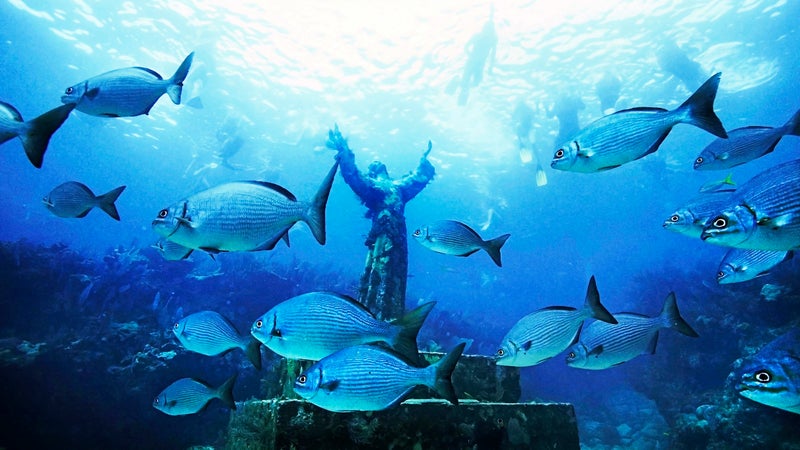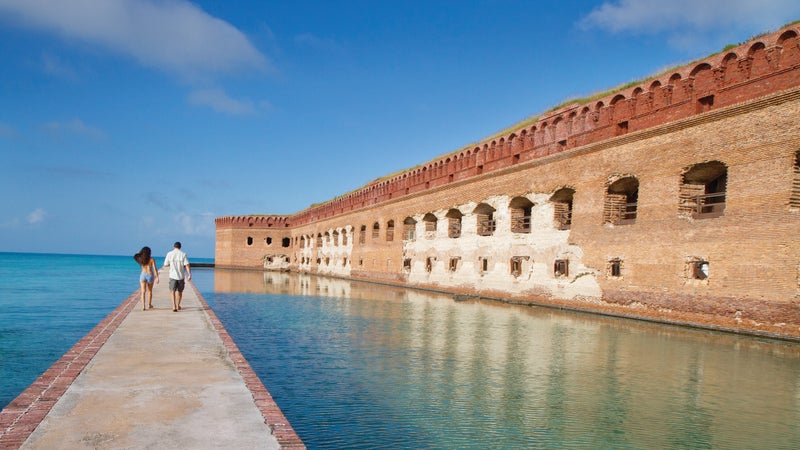You’re probably familiar with the laid-back vibe. And while it’s a truly incredible place to unwind, don’t let all of the umbrella drinks and shady hammocks fool you. With more than 800 islands, picturesque beaches and mangrove forests, the country’s only live coral reef, and a 100-mile trail of sunken ships, there’s plenty to keep you busy. And get this: there’s a road that runs through the heart of the islands, a feat of engineering and fortitude matched only by the Keys’ natural beauty. Here’s a highlight reel of adventure, stretching from Miami to America’s most remote national park.
Paddle and Snorkel the Maritime Heritage Trail
Any good Keys road trip should start in the northern Keys, with paddling and snorkeling on the Maritime Heritage Trail in , which surrounds Old Rhodes Key and Elliott Key, just off the coast of Miami. This is the beginning of the of sunken shipwrecks that punctuate the ocean floor throughout the Keys. There are six wrecks to explore inside the national park, all of which can be reached only by boat. Mandalay, which sank in 1966 after running aground on Long Reef, is the easiest for snorkelers because it lies in an extremely shallow grave.

Explore Florida Keys National Marine Sanctuary
The protects 2,900 square nautical miles of water surrounding the Florida Keys, stretching from Miami all the way to Dry Tortugas on the southern tip of the Keys. The Sanctuary holds some of the best dive and snorkel destinations in North America and protects the country’s only live barrier reef. About 30 miles south of Biscayne National Park, you’ll find Molasses Reef, a massive collection of coral off the coast of Key Largo where the northern end is in only 10 feet of water. Roughly 70 miles south of Key Largo sits Looe Key Sanctuary Preservation Area, another gem of the sanctuary. The dedicated preserve is 5 miles off the coast of Ramrod Key and has one of the most diverse reefs in Florida, with an abundance of Elkhorn and Star coral attracting more than 150 species of fish in shallow water.
There are nine ships scattered along coral reefs throughout the Keys offering divers a unique perspective into the area’s history and aquatic life
Dive Shipwrecks in the Keys’ Clear Waters
On the within the National Marine Sanctuary there are nine ships scattered along coral reefs that offer divers a unique perspective into the area’s history and aquatic life. Each ship has an underwater guide that provides its position. Some ships sit in water shallow enough for snorkelers to explore, while others require dives of more than 100 feet. Islamorada makes an excellent base for wreck diving, with guided excursions that will lead you to The Eagle, sunk in 110 feet of water and the USS Alligator, which sank in 1822 in just 25 feet of water.
�����ԹϺ��� Through “Old Florida”
Indian Key used to be a home base for salvaging wrecks throughout the Keys. Now is an isolated spit of adventure that’s accessible only by boat. Most people kayak to the island, where you can hike the re-created street system through “old Florida” looking for ruins, paddle through the mangrove forest looking for gators, or snorkel the reef surrounding the island.

Camp at the Country’s Most Remote National Park
The road trip turns into a boat trip as you continue 70 miles west of Key West via ferry to , a collection of seven islands and the most remote unit in the national park system. Plan to spend at least a couple of days in the park, camping on Garden Key, next to the stone walls of Fort Jefferson, kayaking the shockingly clear waters between the islands, and snorkeling the small reefs off Loggerhead Key. The 49-acre Loggerhead has its own sandy beach and lighthouse, along with Little Africa, a coral reef known for its collection of tropical fish. The only catch? While the park is serviced by a ferry and seaplanes daily, you’ll need a kayak or your own boat to explore other areas of the park beyond Garden Key.
Wander and discover Florida’s natural wonders, from crystal clear springs, natural caverns, and mangrove tunnels, to the only living coral barrier reef in the continental U.S. For inspiration on your next adventure, go explore at .��

